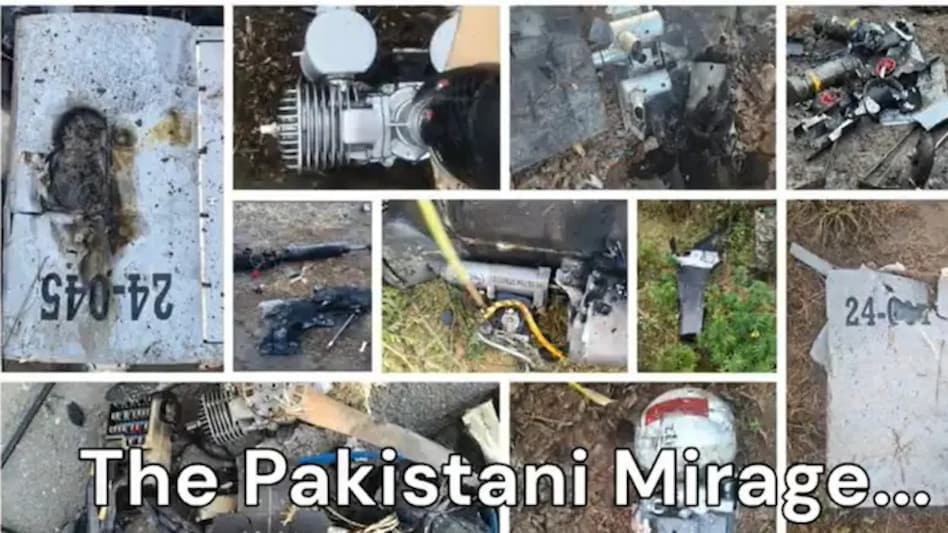 India downed Pakistani Mirage in Op Sindoor
India downed Pakistani Mirage in Op Sindoor
 India downed Pakistani Mirage in Op Sindoor
India downed Pakistani Mirage in Op SindoorIndia on Monday confirmed that a Pakistani Mirage fighter jet was brought down during Operation Sindoor. The Indian Army released footage showing wreckage of the jet, while top defence officials briefed the media on Pakistan's failed aerial offensive and India's successful retaliatory strikes.
Director General of Military Operations Lt Gen Rajiv Ghai, Director General Air Operations Air Marshal AK Bharti, and Director General of Naval Operations Vice Admiral AN Pramod addressed a joint press conference, outlining the sequence of events under Operation Sindoor.
They also displayed debris of Turkish-origin YIHA and Songar drones and fragments of a PL-15 air-to-air missile of Chinese origin, all recovered after Pakistan's failed attacks.
Air Marshal Bharti highlighted the robustness of India’s indigenous systems, particularly the Akash surface-to-air missile platform. “Our battle-proven systems stood the test of time. The Akash system performed remarkably,” he said. He credited the government's sustained policy and budgetary support over the past decade for enabling India’s integrated air defence preparedness.
The Indian Air Force not only neutralised incoming Pakistani missiles across Jammu & Kashmir, Punjab, Rajasthan, and Gujarat — but struck back with precision, destroying nine terror camps and key military infrastructure in Pakistan. A Chinese-supplied HQ-9 air defence unit in Lahore was among the targets hit. Not a single Pakistani missile or drones reached its intended target.
According to John Spencer, Chair of Urban Warfare Studies at the Modern War Institute, "India's domestically produced weapons worked. China’s did not.” He described the operation as a clear example of modern military effectiveness, noting that India’s shift toward self-reliance had turned its defence doctrine into a model for other nations.
Since 2014, India has significantly upgraded its defence systems under the “Make in India” push—from meeting just 32% of the Army’s ammunition needs domestically to 88% in 2024. Indian-made platforms such as BrahMos, Pinaka, Akash, and DRDO’s drone-countermeasures are now combat-tested.
The operation also marked the first battlefield use of loitering munitions—suicidal drones made in India and ordered in 2021—alongside Israeli-origin Harop drones and Rafale jets equipped with SCALP and HAMMER missiles.
"This was a different kind of warfare,” said Air Marshal Bharti. “If we fight another war, that would be completely different. It is a cat-and-mouse game—we need to stay ahead of the curve.”
India's current air defence grid integrates the S-400 Triumf, Barak-8 MR-SAMs, Akash systems, and DRDO-built counter-drone technologies into a seamless shield.